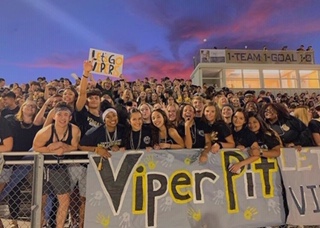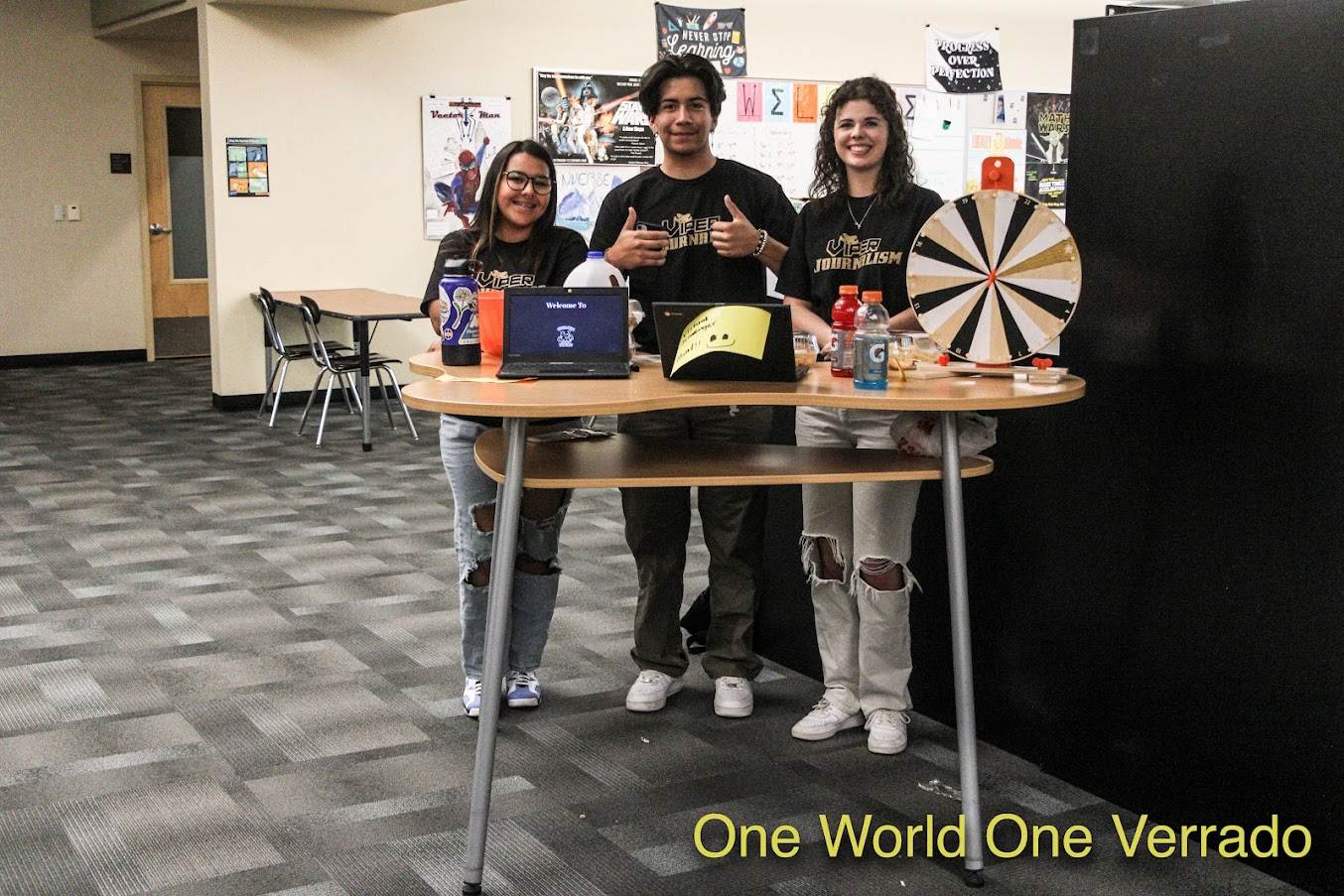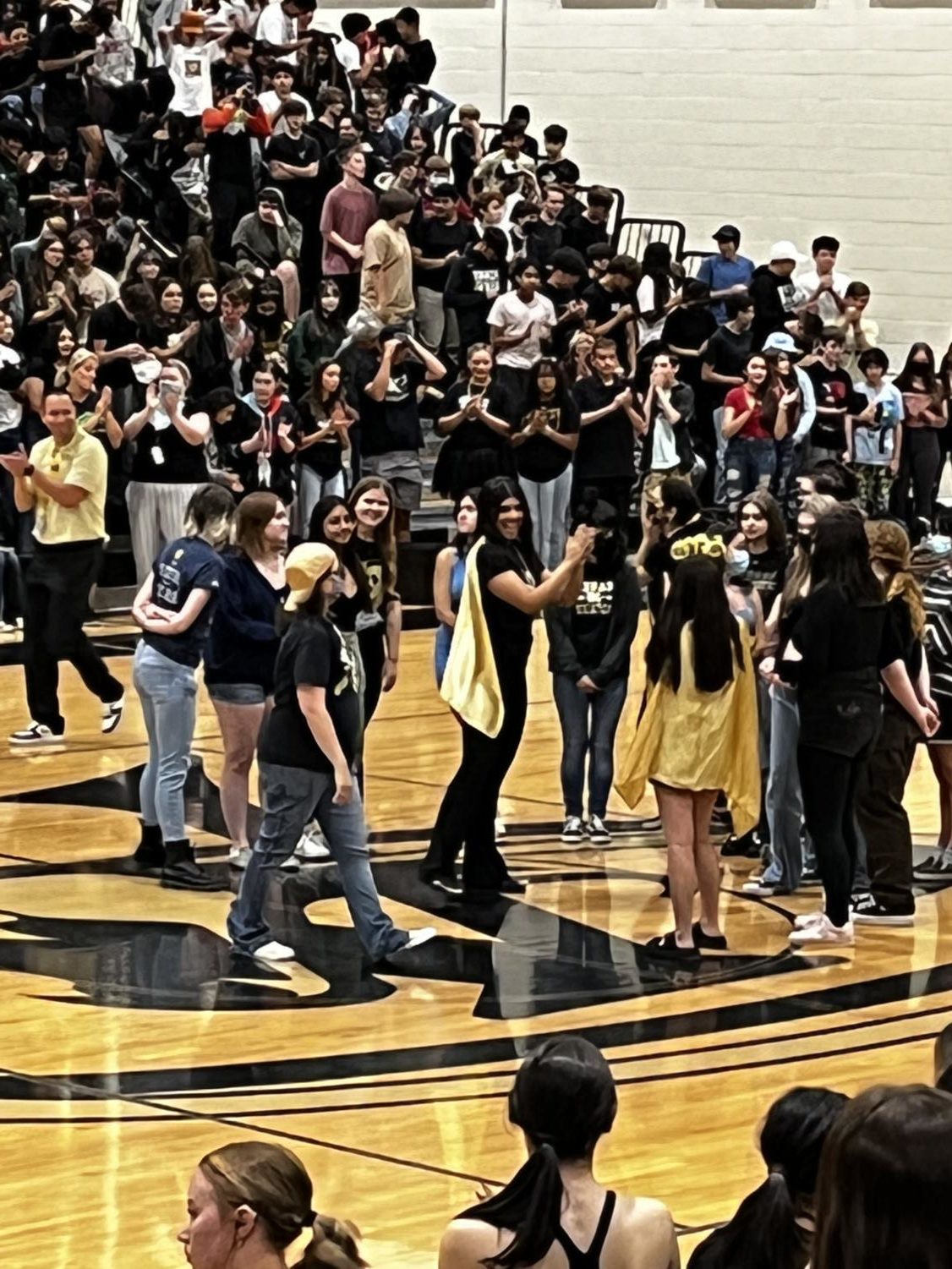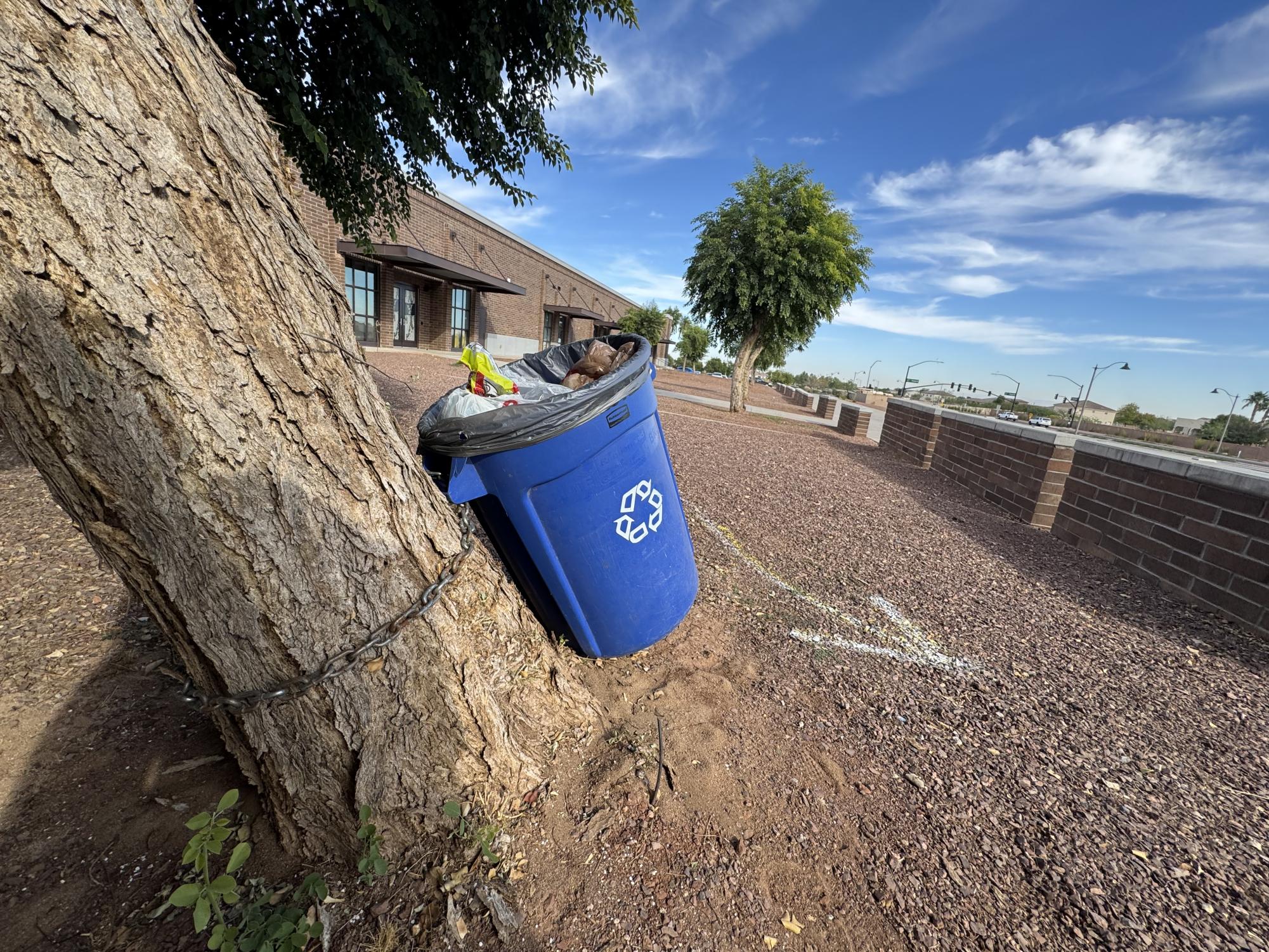Recycling receptacles are sprinkled throughout the campus at Verrado High School which superficially implies that the school does its part in recycling.
“For the first four years I was here, I knew there was recycling. Why did they get rid of it? I’m not sure, but it has something to do with the city of Buckeye and its recycling program, I thought.” Eren Eisen, a longtime VHS teacher and currently teaching U.S. Government, would comment, “We go through so much paper, cardboard, and plastic; there should be a recycling program for all sites.”
Nathaniel Showman, former Verrado High School Principal and current Executive Director of CTE and Academics at Agua Fria Union High School District (AFUHSD), explains that “A student club ran for about a year, a program where they collected paper or cans at the end of each week and self-transported it to a recycling facility. I think it was during the [2008 to 2009 academic] school year and did not last long.” This would back Eisen’s claim, and is, seemingly, and unfortunately, the most VHS has received in terms of recycling on record.
Andrew Arellano, Verrado High School’s new Environmental Science teacher shared insight from other schools he’s worked at: “At Copper Ridge School [in Scottsdale, Arizona] we had a recycling program, at Trevor G. Browne High School [in Phoenix, Arizona], we used to, but they stopped funding it. We still had the recycling bins, but nobody came to collect it so it’s just trash… where the trash pickup bins were there was one there for recycling, but it just became another trash bin.”
Kitchen Manager Jessica Perez even commented, “I know when we throw out trash there’s a recycling bin where we’re supposed to throw boxes, but that’s it, I don’t know if anything else comes from it.”
Showman stated that “[Recycling] was not part of the [Buckeye] waste program at the time and we would need to outsource to a local recycling company. I don’t remember the cost specifics, but it was too expensive to add to the site budget.”
Unfortunately, before any interview with Showman, no one from the AFUHSD had responded to requests about VHS’s recycling strategy and general program over three weeks of emailing and months of waiting.
Names for whoever is in charge of sustainability, and moreover an insight into their strategy and current official program, have never been provided. What is presented here is all the gathering of general information from staff across Verrado High School along with AFUHSD.
So what does the output of recyclable materials look like at VHS?
Verrado High School’s plastic output is difficult to truly examine without the official knowledge and/or program at VHS. It’s simplest to just view the seemingly largest output of trash on campus for students, and perform a more or less independent examination on at least the most visible main contributor(s)–perishables and/or lunch.
With plastics so deeply intertwined with our lunch system, there’s a metaphorical treasure trove of recyclable materials/wastes. But all of it is put in landfills or worse.
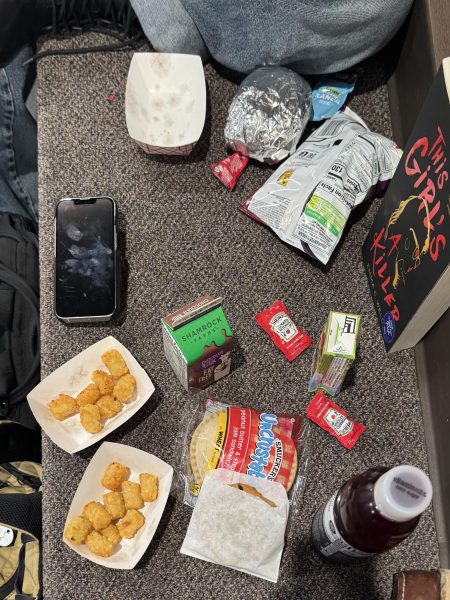
A typical school lunch has a side of tater tots, along with the option of an Uncrustables peanut butter and jelly sandwich packaged in plastic, a chicken sandwich wrapped in foil, chicken tenders in a cardboard container, along with cheeseburgers and hamburgers wrapped in foil, which are provided with a plethora of sauces capped at three maximum along with a juice and milk.
Recyclable materials are found everywhere, from the foil, to the cardboard, and to the plastic packaging. The smallest amount of recyclables you can have in a given school lunch is two, the packaging of your entree and the cardboard containing your tater tots, and the largest is seven, the aforementioned along with your cardboard-contained milk, juice, and three packaged sauces.
The aforementioned two to seven recyclable materials excludes optional additional purchases the school provides. If you were to buy any of the extra snacks or foods they offer, that number could easily skyrocket to three (a normal lunch and a bag of chips contained in plastic/foil) or even to nine recyclables (a normal lunch, bag of chips contained in plastic/foil, an extra drink contained in a plastic bottle, juice, milk, and three sauces).
Individually this seems small. When viewing the entirety of people who eat the school’s food, this–granted if everyone bought lunch at the school, including those who purchase optional (up to two) items–could drive the number of recyclables anywhere from 964 recyclable items minimum to 4,338 recyclable items a day maximum in the senior class alone.
When asked how often she handed out recyclable materials, like the packaging aforementioned, Perez would state: “Every day–every day for every meal,” when asked how often she saw plastics and other recyclables from the lunches be thrown in the trash, she’d once more respond: “Every day.”
That is 964 to 4,338 recyclable items that are not recycled daily for seniors alone and are dumped into landfills because there is no convenient way to recycle them.
There are 153 days of school this school year. If roughly 964 to 4,338 recyclable items are thrown into landfills daily, then Verrado is projected to have 147,492 to 663,714 recyclable items in landfills in just the senior class.
The shocking fact is that this number can only be higher when calculating for the rest of the student population if freshmen, sophomores, and juniors were to be included, too.
Even if the number of people who bring lunch from home was counted as well, there’s still a greater possibility that the number is higher than 482—the population of seniors—counted for in a school body size of 1,854, as that’s only a quarter of the student body, specifically, that’s only 26% of the student population who have been calculated to throw 147,392 to 663,714 recyclable items into the trash.
If a quarter of the estimated recyclables were to be genuinely recycled this whole year from the senior classes’ output, which would be around 36,949.5 to 165,928.5 items, a plethora of new items could be made from that amount, just a quarter from clothing made from polyester fabric (derived from the plastic bottles and wrappers from your lunch), to packaging and paper products (all from the cardboard you use as a tray).
“Overall–just in general–a recycling bin.” Arellano indicated, “I mean I have one or two students a day go ‘Hey can I go to the vending machine and get whatever’ and it’s definitely in a plastic bottle, or an aluminum can–having something like that right next to a vending machine would make a difference” Arellano would add.
So why don’t we recycle?
We’re well within Buckeye’s permitted boundaries for trash and recycling pickup.
The city of Buckeye’s website detailing recycling even says “Recycling is a no-cost service included with the monthly solid waste fee.” Even if it applies residentially, this is far better than the situation described from Showman so many years ago.
From everything researched, this matter hasn’t been seemingly considered, or at least the cost hasn’t been calculated, since at least a decade if not longer ago. In that time, the city of Buckeye has founded a recycling program that reduces costs from what they were projected to be all those years ago when they didn’t have it within their waste program.
But if we are recycling, like Perez commented, then why hasn’t that extended to the student body? Roughly a quarter of the student body will produce 147,492 to 663,714 landfill-bound recyclable items by the end of the year–a figure much higher than the boxes that the school lunches come in.
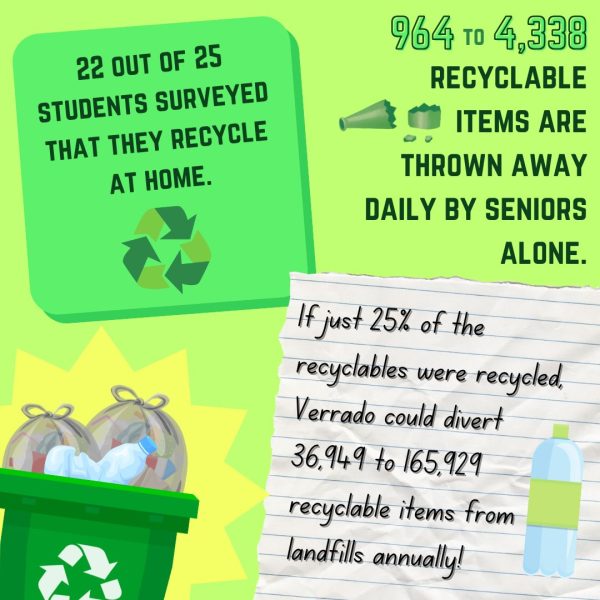
Trends show that students are extremely receptive to recycling. According to a survey taking place among students in environmental science, 22 out of the 25 students who completed the survey recycle at home, and among the three who don’t recycle, two express the active desire to recycle. All students believe it is viable and important, and 23 out of the 25 would recycle if given the opportunity at Verrado High School. Roughly half the students–13–would be interested in participating in recycling programs and/or activities here on campus.
Adding more on what was said earlier about the recycling club that ran from 2008-2009, Showman would comment “A student program who took on the collection and transport of say paper to a recycling plant would be a noble and worthy cause, but it is hard to sustain.”
If VHS were to reinstate a recycling club, it’d be important to build off of the previous efforts and implement better recycling initiatives in order to longer-term success and sustainability.
Challenges of maintaining student-led recycling programs are evident, but the outcome of the survey dictates that with proper support and planning, recycling initiatives at Verrado High School can thrive.
With pollution ramping up more and more it is estimated that plastics in the ocean will outweigh the fish sharing the same home by 2050. To ensure a better future recycling must take place and there must be a more active role than the passiveness the district is taking presently.
A six-figure number of recyclable items from Verrado’s senior class alone is on track for the landfill, all the opportunities to implement an expanded recycling program are present and students show interest and readiness to learn and put effort into it. It can only be hoped that AFUHSD will implement recycling to reinforce the morality of Agua Fria and its future.
Addressing global concerns is quintessential for preparing students for the future. Giving students opportunities to directly address these issues such in the case of pollution could strengthen and help prosper a core principle of education–to ensure a better future– at Verrado High School, or district as a whole.
Leaving there to be hope, Showman added hopefully “Maybe Verrado has grown enough where the cost of recycling is not as high now as it was in ‘08-’09–that might be worth researching.”
